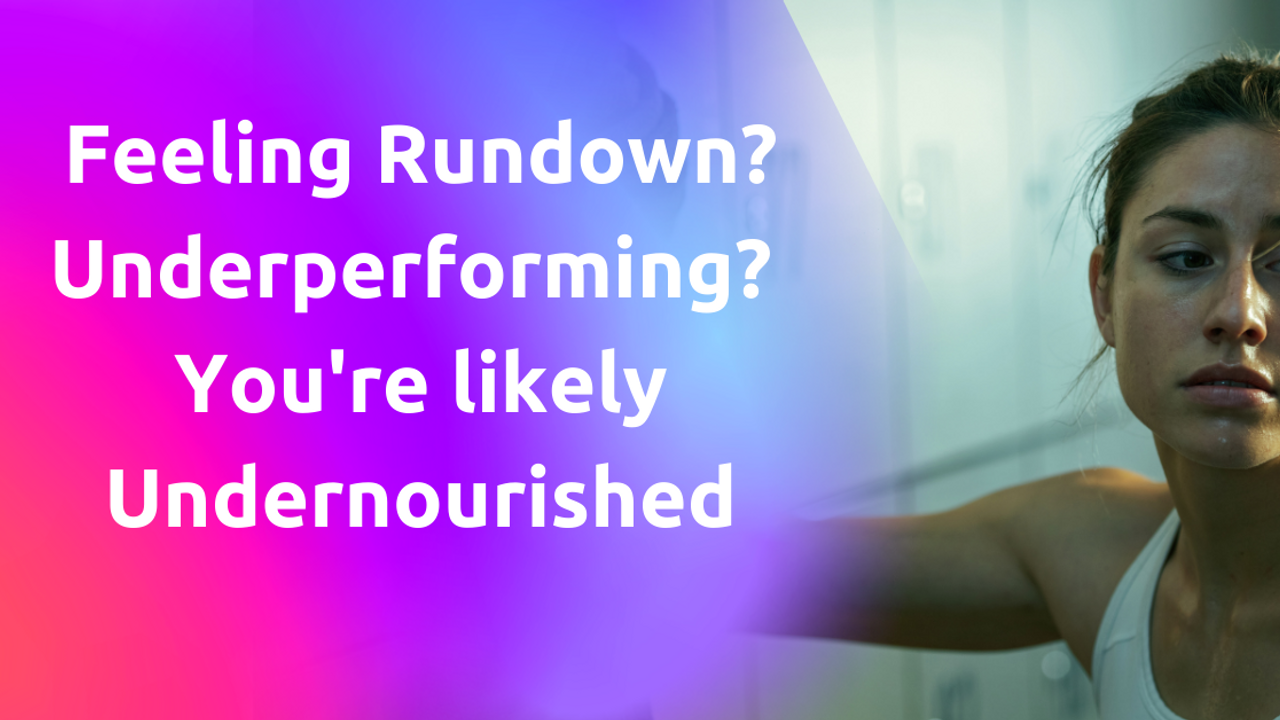
Rundown? Underperforming? Research Shows You’re Likely Undernourished
May 31, 2021Reposted with permission from Dr. Stacy Sims
Here’s how to make sure you’re eating enough!
When women come to me because they’re struggling with poor performance one of the simplest (though not always easiest) and most successful strategies I provide is getting them to eat more.
Many women athletes are chronically underfed, whether it’s because they’re afraid to eat; they’re in a constant state of trying to lose weight (a.k.a. afraid to eat), or they are unknowingly underfueling themselves because they just don’t realize how much energy and nutrition they need.
This is more common in women than men and a research review published earlier this month in the journal Archivos Latinoamericanos de Nutrición (Latin American Archives of Nutrition) shows the consequences: Women athletes are more susceptible to iron, calcium, and vitamin D deficiencies than their male peers. Iron is essential to produce oxygen-carrying hemoglobin and calcium and vitamin D are essential for bone and muscle health (among many other things!). The women were also at increased risk for being low in magnesium, which helps with muscle function, blood pressure, bone health, and maintaining blood glucose.
The researchers reviewed 42 studies published between 2013 and 2020 that examined the effects of deficits in total calories, protein, and vitamins and minerals on performance. They found that not only were women more likely to be deficient in these key nutrients, but also between 30 and 70 percent of the women in the studies were energy deficient.
This paves the way for low energy availability and RED-S (relative energy deficiency in sport), which, as you know, increases your risk for low bone density and injuries like stress fractures, as well as mood disorders and, of course, poor performance and recovery.
Sometimes women end up in this type of undernourished state because, as I mentioned upfront, they’ve been restricting food for years (maybe most of their lives) and they are afraid to eat enough. Other times, women can inadvertently underfuel because they start performing more high intensity exercise, but since they’re working out for a relatively short amount of time, they don’t register that they need to eat more to support that harder type of training. They also may not feel as hungry right away, because their appetite is blunted by the intense exercise. So they go about their day and end up in a hole .So many women barely achieve their resting metabolic rate needs (~1300-1400kcals) - the amount of calories needed to just lie on the couch watching Netflix, let alone eat enough for life and training.
As an active woman you need to eat enough, being sure to consume a well-rounded diet that includes ample amounts of fruits and vegetables and all your macronutrients (protein, fats, and carbohydrates).
For reference, on a moderate training day, which is a day where you’re doing a HIIT session, a heavy weight session, or 1 to 2 hours of cardio you need:
- Carbohydrate: 3-4 grams per kg of body weight
- Protein: 2-2.3 grams per kg of body weight
- Fat: 1.2 grams per kg of body weight
So a 140-pound woman would need to eat about 2300-2500 calories on the majority of her training days. That’s a far cry from what many women actually eat.
Here are some telltale signs of underfueling. Many trainers and coaches will see these signs and chalk them up to “overtraining.” But in reality, they’re symptoms that you’re not eating enough to support your training.
- Decreased training response. One of the first signs of lower energy availability is your performance plateaus or decreases. You can’t hit your wattage. You have less strength and power. Your heart rate is off. You’re not recovering well.
- Irregular periods.One of the reasons I am so adamant of tracking your period, if you usually have one, is that a tell-tale sign of underfueling is change in your menstrual cycle- bleeding becomes lighter and shorter, you skip a period or two. These are signs that there is not enough fuel coming in to support your endocrine health.
- Bone health decreases. Stress reactions and fractures are a major warning sign of low energy availability.
- Immunity drops. You end up more prone to infection. So if you’re starting to pick up every cold, your immune system is depressed.
- Gut distress increases. This one can be tricky because it can mimic symptoms of hormonal fluctuation that women often experience. But low energy availability also can cause IBS symptoms, bloating, gassiness, nausea, and generally not feeling well after eating. That’s because your gut microbiome is off from the chronic inflammation that happens when your body is under stress from not having enough energy to perform all of its functions.
- Coordination worsens. Without the energy you need, you are more fatigued, which impairs your cognition, reaction time, and coordination.
- Chronic hangriness. Low energy availability can make you perpetually hangry. You feel more irritable, anxious, and depressed. Your hunger cues may be gone at this point, so you don’t even know that you’re “hangry.” Or you may feel really hungry at odd times like when you’re out running errands or when it’s time for bed.
But don’t wait for these symptoms to pop up to eat enough! Proper fueling is the number one way to enjoy immediate performance gains.
Make your inbox Feisty
Get the latest in women's sports & performance news every week with The Feist. Read a sample newsletter here.
We hate SPAM. We will never sell your information, for any reason.

